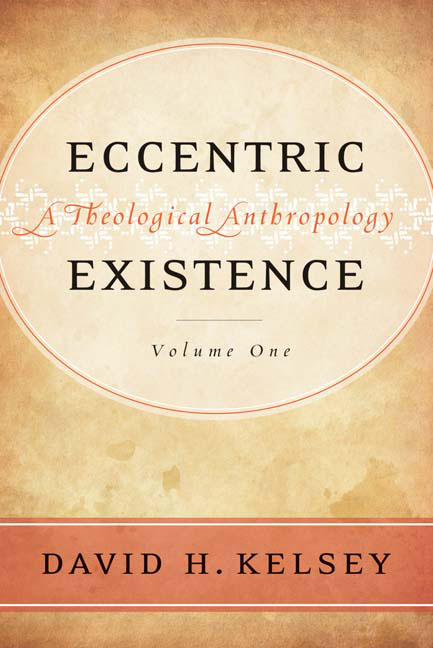
I’m starting something new with this post: public reflections and commentary on the things I’m reading. The idea here is to model and encourage a more readerly, more thoughtful, more research-oriented world, to whatever small degree and in whatever small way I can — as well as to expose those of you out there following along to the more interesting things I come across. These kinds of posts are far from the totality of my notes on whatever I’m reading; they’re a carefully-chosen selection of my thoughts and comments that are designed to be publicly fruitful. (My notes in general ramble and dither and are just generally not at all worth publishing!) As with my writing in general, I’m under no illusions that I’m going to change the world with this. Perhaps, however, I can make some corner of it a little bit better.
This afternoon I started reading David H. Kelsey’s Eccentric Existence: A Theological Anthropology. I’ve gotten through only the first chapter (in its two parts), and on the whole I’m quite enjoying it. However, having finished his introductory chapters, including an academically-oriented chapter on method, I found myself with a remaining, and quite serious question: what, exactly, are David Kelsey’s theological commitments — if any?
I have a good sense, having worked through these chapters, what he considers the project to be about. It is, as he concludes Chapter 1A, a “systematically unsystematic theological anthropology.” That is a partial answer to my question — an intentional eschewing of dogmatics and of systematics — but not a sufficiently robust or satisfying one for my taste. Kelsey wrote a (very dense!) chapter concerned with theological method, which he points out is “unavoidable as it is (often) tedious” (xiii). But in those thirty pages, he never once tells his audience what his priors and commitments are.
I get the sense — just barely — that he is somewhere within the Reformed tradition broadly construed. I have no idea what that means in terms of what he understands to be in or out of bounds, though. Does he affirm the Westminster Confession? Deny the Three Forms of Unity? Consider himself an inerrantist or think the entire idea nonsense? I can’t say. These may not even be questions he thinks are reasonable or right to ask, depending on what tradition he’s coming from. But I don’t know, because he doesn’t say. For all that I appreciate his explanation of his method — and indeed, for all that there is a great deal to commend it — I find this to be a fairly serious lack. And the more so given that he highlights so clearly that traditions and the practices that form them and are carried on within them are essential to his framing of the entire project.
Why should we care about this kind of thing? Because it makes for better arguments, in short. Making our a priori commitments clear lets our interlocutors follow our moves more easily. To be sure, it can also create a kind of blindness in us as readers if we expect that someone in a certain tradition will inevitably make a certain move. But the burden here is shared. Both the author and the reader have work to do. The author should make clear his commitments — including, perhaps especially, those which diverge from what one might expect. The reader should take those kinds of professed commitments seriously in interpreting the author’s argument, up to and including identifying contradictions between profession and argument!